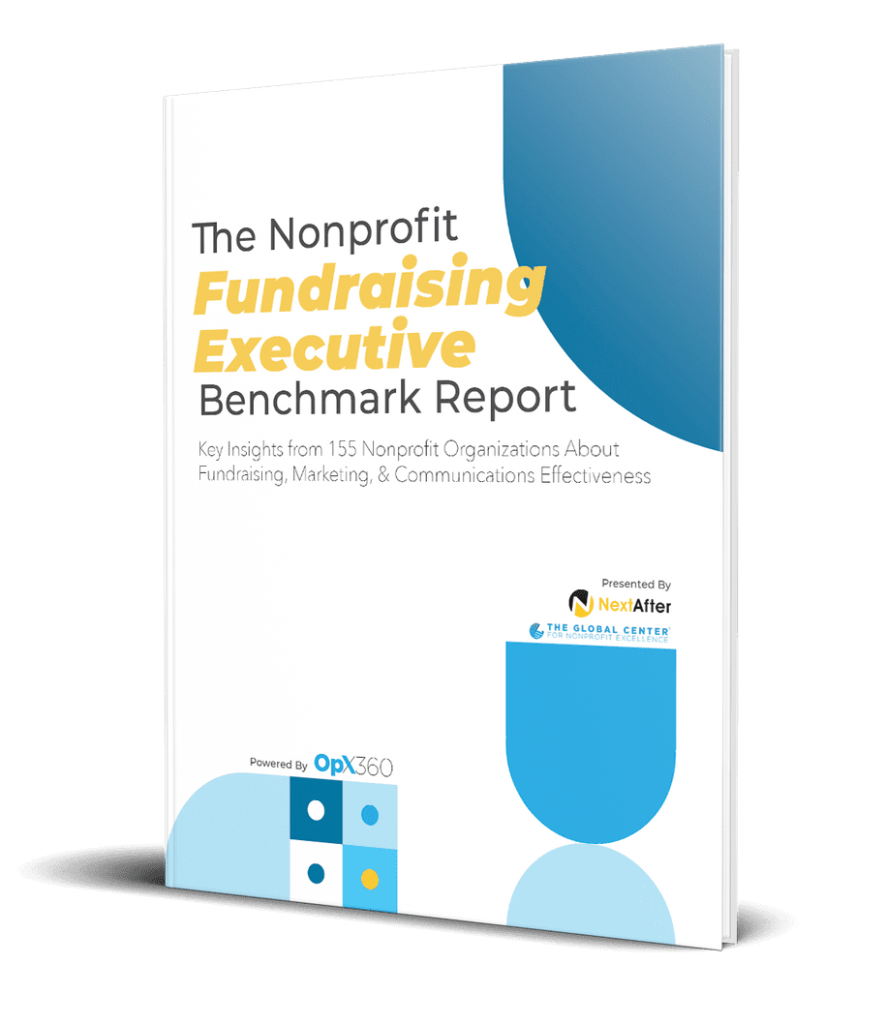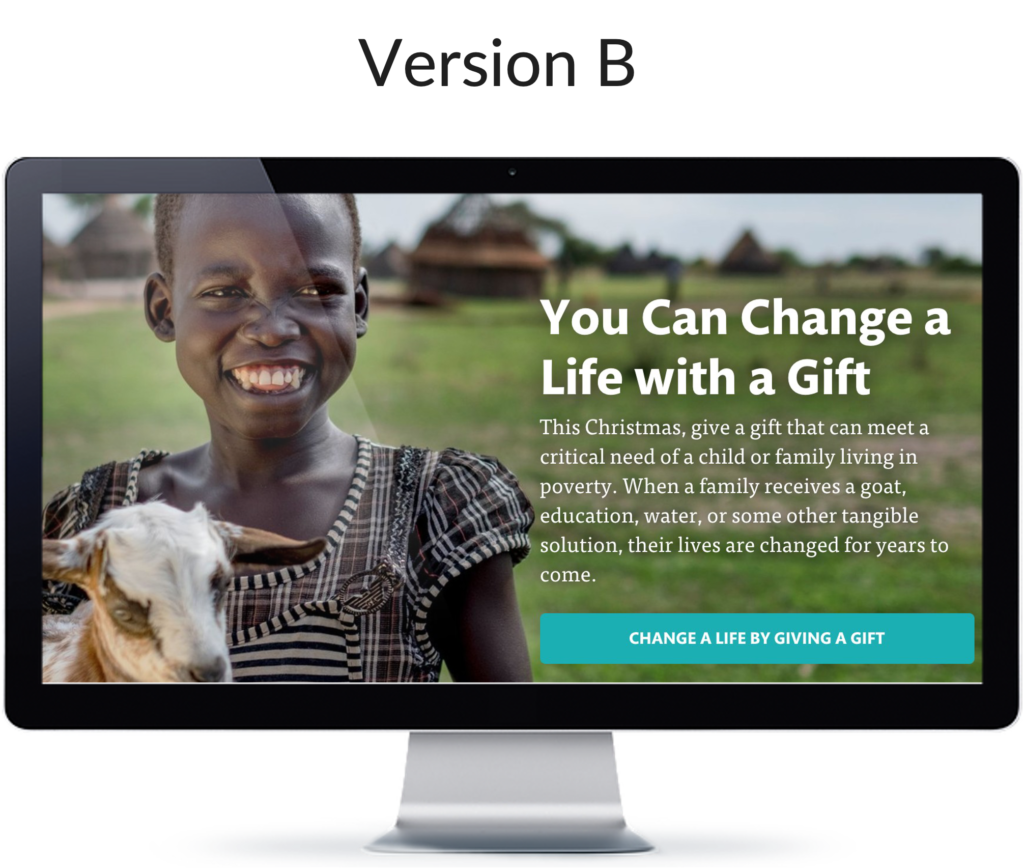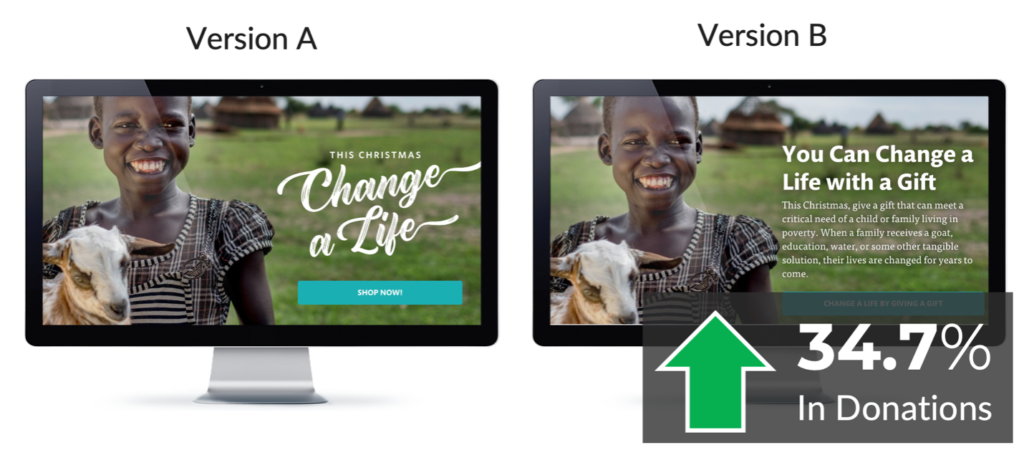1 in 4 nonprofit executives don’t feel they have a clearly defined value proposition.

This is according to an executive study of 155 nonprofits benchmarking their marketing, fundraising, and communication practices. In fact, just 65% of organizations believe they have a fully defined brand and messaging strategy.
Without a clearly defined value proposition, your fundraising staff, communications teams, or anyone who interacts with potential donors is going to be left to their own devices to answer one of the most fundamental fundraising questions: “Why should I give to you?”
If you don’t give your organization direction on how to answer this question, how will you ever know what works to grow giving and increase revenue?
What is a value proposition, exactly?
Your value proposition is the most critical messaging tool you have to inspire donors to give. It’s the answer to the fundamental fundraising question – something every donor asks either consciously or subconsciously before they give:
If I am your ideal donor, why should I give to you, rather than to some other organization, or at all?
Every part of this question is important as you consider your messaging.
Breaking down the value proposition question
“If I am your ideal donor…”
The first part of this question sets the tone for all your messaging.
You – an executive, leader, or fundraiser at your organization – know a lot about the cause you serve. You understand the problems, the programs you offer, how a donor can get involved, and the areas of greatest need.
The average donor to your organization does not have the same insider info that you have.
To communicate effectively, you need to frame your value proposition from the perspective of your ideal donor.
“…why should I give to you…”
Donors need a compelling reason to give. If there is no problem that needs to be solved, there’s no reason to give. You need to make sure your value proposition gives donors compelling, clear, tangible reasons to get involved.
“…rather than some other organization…”
Like it or not, donors are going to compare you to other organizations.
There are other nonprofits that serve your same cause, and your value proposition needs to show donors why their investment is best made with you. What is your unique approach? What sets you apart from other similar nonprofits?
“…or at all?”
The end of this question addresses a critical reality: no one is obligated to give to you. A donor can always choose to say, “No, thanks.”
As a result, your value proposition must be strong enough to inspire a donor to pause whatever they were doing, read your email / direct-mail letter / advertisement / donation page, pull out their credit card, and complete a donation.
All along the way, the routine of everyday life is drawing them away from giving.
Why should I give to you rather than…
- Go back to replying to emails
- Keep working on the project I was working on
- Start making dinner for my family
The importance of communicating your value proposition

Marketers can easily get hyper-focused on branding at the expense of fundraising and revenue. That’s because many discussions about branding focus solely on the look and feel of logos and web pages.
As a result, the value proposition gets left behind.
In the experiment below, this organization had a branded year-end fundraising campaign. It used a designed tagline saying, “Change a Life.”
But they wondered if their campaign (as advertised on their homepage) needed more clarity to address the core value proposition. So the organization developed a new version of their homepage ad and ran an A/B test.
This new version addressed each part of the value proposition question.

“If I am your ideal donor…”
They positioned their copy to be framed from the perspective of the donor. Who can change a life? “You can change a life with a gift.”
“…why should I give to you…”
They provided more clarity around the need to give. Why should I give? Because you “can meet a critical need of a child or family living in poverty.”
“…rather than some other organization…”
Enough detail was added to help convey their unique approach to helping children and families in poverty. “When a family receives a goat, education, water, or some other tangible solution, their lives are changed for years to come.”
“…or at all?”
The original call-to-action asked potential donors to “Shop Now”. It doesn’t give clarity on how you can make an impact now. A donor can shop anytime, so there’s no real reason for me to start shopping here and now.
They changed the call-to-action to be clearer and convey impact: “Change a Life by Giving a Gift”.
The Result of a Stronger Value Proposition
Adding more value proposition copy that addressed each key part of the question led to a 34.7% increase in donations from web traffic on their homepage.

Now imagine if you had a clear value proposition communicated on all your advertisements, emails, and donation pages. What type of impact might you see if you equipped your whole organization to communicate your value proposition every time they communicated with donors?
Clarify the Value Proposition at Your Organization
There are 3 clear next steps you might take to begin clarifying your value proposition.
Conduct an internal focus group
One way to start clarifying the value proposition at your organization is to identify all your “value claims.”
Invite several team members from various levels and parts of your organization to a brainstorming session. Spend some time having each person write down as many reasons why they think a donor might give to your organization as they can.
Then, as a group, list out all the supporting evidence behind each reason to give that will help build a donor’s trust.
For example, one value claim might be: “I (the donor) can provide food to a family that is struggling to make ends meet.”
Supporting evidence for this claim could include:
- We served meals to 10,000 families this year
- The average cost of a meal this year was $25
- 60% of the families that we served this year got back on their feet
The goal is to find as many reasons as possible why someone would give to you and make sure you can support those claims with substantial evidence.
Get your donors feedback with a survey
Utilizing your focus group data, you can create a survey to send out to donors and get their feedback.
You might share each value claim in the survey and ask donors how much they want to support it on a scale of 1 to 5.
If you also ask them “Why do you give to our organization?” in an open field, you may receive new ideas to add to your list of value claims that will inform your messaging.
Test your best ideas to see what works
As a result of your focus group and surveys, you will find yourself with a lot of ideas on how to communicate your value proposition. However, what you think donors want – and even what donors say they want – does not always represent how donors behave.
To know exactly what works to inspire greater generosity, you must test and see what works.
Run an a/b test on your nonprofit’s donation page or in your next email appeal to test different approaches to communicating your value proposition. And remember, the goal of an a/b test is not just to get an increase in giving – it’s to learn something about your donors.
Get more insights for nonprofit executives

Want to see what else we learned from benchmarking the fundraising, marketing, and communications practices of 155 nonprofits?
You can get access to the full Nonprofit Fundraising Executive Benchmark Report for free here.



